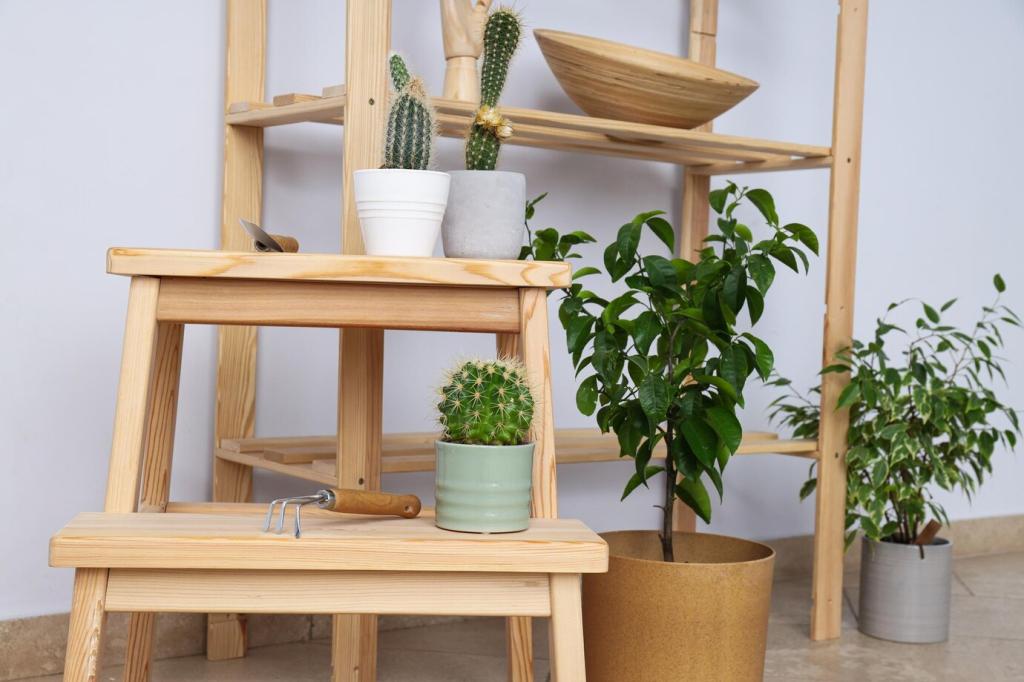Repurposed Furniture in Sustainable Design: Second Lives, Lasting Impact
Chosen theme: Repurposed Furniture in Sustainable Design. Step inside a space where character meets conscience, and every table, chair, and shelf proves that creativity can conserve resources while enriching daily life. Join the conversation and help shape our circular community.
Cutting waste through intelligent reuse
Every chair, stool, or table diverted from landfill saves raw materials, transportation emissions, and money. Repurposing extends embodied energy, turning yesterday’s waste into tomorrow’s heirloom. Share one item you saved from the trash and why.
Preserving stories and craftsmanship
Patina, tool marks, and dovetails record human effort. When we keep those traces, furniture becomes a storyteller. Tell us about an object in your home that carries memories and still earns daily usefulness.
Making sustainability affordable and local
Buying repurposed pieces supports local makers, repair shops, and material yards. It also stretches budgets without sacrificing design integrity. Comment with your favorite neighborhood source, and we will compile a community-sourced map for subscribers.
Materials and Methods for Thoughtful Repurposing
Identify species by grain, scent, and weight; avoid pressure-treated boards for interior use. Straighten with patient milling, not aggressive cuts. Post your best reclaimed wood tip so beginners can avoid splinters, warping, and discouragement.
Materials and Methods for Thoughtful Repurposing
Wire-brush steel for texture, then seal lightly to prevent over-shine. Temper glass edges for safety and pair with simple joinery. Share a photo of mixed-material repurposing that balanced strength, transparency, and warmth without visual clutter.
Patina with intention
Highlight imperfections with restraint, contrasting smooth planes against weathered edges. This juxtaposition reads intentional, not accidental. Ask yourself which scratches are narrative and which are noise, then invite readers to vote on your next edit.
Minimal lines, maximal meaning
Simple silhouettes let reclaimed materials breathe. Thin aprons, honest joints, and floating tops showcase grain and shadow. Share a sketch of a clean-lined piece you want to build, and invite feedback before cutting anything.
Color cues from history
Borrow hues from the material’s past life: gym-floor amber, factory-green, slate-gray steel. Use color blocks to frame patina, not hide it. Which palette whispers sustainability to you? Comment, and we will test schemes together.


Case Stories: Second Chances that Changed Rooms
A retired basketball court became a dining table where free-throw lines now frame pasta bowls. We left scuffs as history, not defects. Share your own transformation story, and we may feature it in next month’s roundup.
Case Stories: Second Chances that Changed Rooms
An old factory cart rolled into a living room as a coffee table, steel wheels humming softly on rugs. Guests asked questions, and conversations started. Tell us what unexpected conversation your favorite repurposed piece always sparks.
Community networks and salvage yards
Join local online groups, salvage yards, and contractor networks. Ask for offcuts, misorders, and decommissioned fixtures. Post your city in the comments, and we will crowdsource a regional directory of trustworthy, ethical suppliers.
Deconstruction over demolition
Deconstruction salvages materials carefully, protecting finishes and dimensions. Advocate for it on community projects and renovations. Share examples where thoughtful dismantling saved character and cash, encouraging neighbors to choose patience over costly, wasteful speed.
Inspecting for hazards and integrity
Test paint for lead, avoid suspicious adhesives, and consult professionals when in doubt. Inspect joinery, hardware, and cracks before purchase. What safety checklist do you rely on? Contribute your essentials so beginners can shop confidently.
Maintenance, Longevity, and the Circular Future
Caring for surfaces without erasing history
Clean gently with pH-neutral soaps, refresh oil annually, and rotate surfaces out of direct sun. Document repairs in a notebook. Share maintenance rituals that keep character alive while protecting structure and health.
Designing for repair and future disassembly
Use screws, knock-down fittings, and reversible glues so parts can be swapped later. Label hidden components with dates. Tell us which repair-friendly detail you now add by default, and inspire first-time builders to follow suit.
Planning the next life cycle
Plan rehoming routes long before damage appears: donation, resale, or part harvesting. Include documentation and care notes. Subscribe for our quarterly exchange list, and help extend each piece’s journey well beyond its current address.
